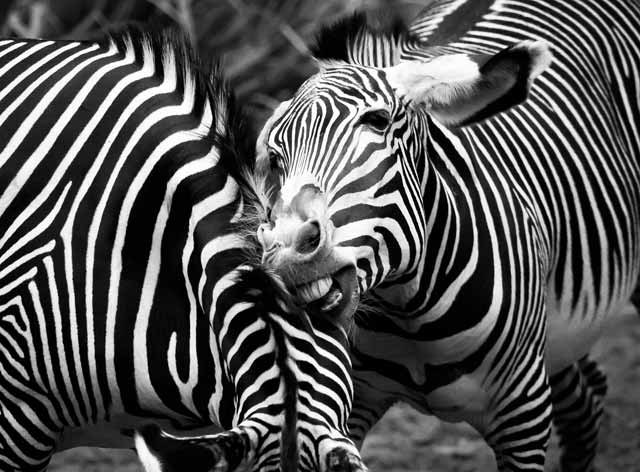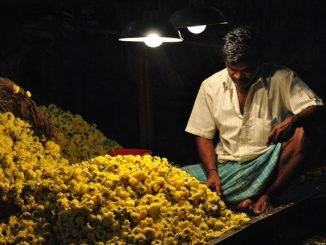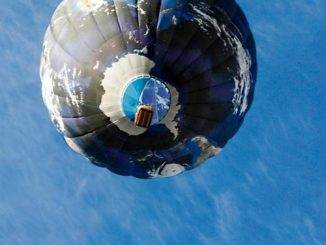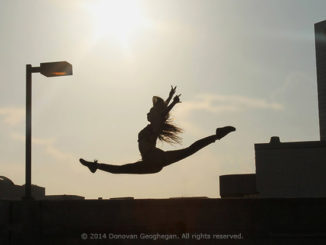Being open to photographing in a variety of conditions and locations can unlock the doors to many photographic opportunities, thus creating pathways to practicing your photo techniques. Practice is critical to making strong progress in photography. Your local zoo is a fantastic place to work on improving your skills. The subjects are available and the challenges of light, background and composition can be significant and stimulating. And if you’re patient and lucky, you’ll also be able to move beyond portraits and create great images that stop the action.
Chomp by Toby Lewsadder

© 2013 Toby Lewsadder. All rights reserved.
Subject: Zebras in action at the zoo
Conditions: Late afternoon when clouds and mist created soft light.
Because of the weather, few visitors attended the zoo, which made the animals more relaxed and playful. I wanted to experiment with shutter speeds and composition.
Composition:
1. Clear focus on the action.
2. Action and lighter shades of white and gray face centered in the image frame.
3. The many stripes of the coat emphasize strong textures and patterns.
4. Even light with no harsh shadows
5. Post-production: image changed from color to b/w to emphasize the stripes.
Noella’s Comments:
Portraits are wonderful, but capturing animal behavior makes for more interesting images. Freezing the moment when the zebra was about to chomp down makes you want to cringe – that’s going to hurt! It also conjures up a question of what happened next. If you quietly observe without interruption, you will be able to anticipate and document some of the better moments of action and interaction.
Because Toby placed the lighter white and gray shades of the face and the focus point in the center of the image frame, the viewer is drawn directly into the action. Among all those stripes, it also creates a place for your eyes to rest.
While that center of rest is welcomed, the stripes are compelling. This is an image that falls into the pattern and texture category in a superb way. Initially you see stripes and more stripes. Then you begin to check out the details – the visual tactile sensations. Are the hairs on the short mane coarse or soft? The ears and nose look soft, but those teeth look more than big and hard.
The clouds and mist gave the light a softness that didn’t break into the composition of the image, keeping it visually on track. The lack of hard contrasting light and shadows made the stripes stand out, emphasizing both the patterns and the behavior of the animals.
Toby’s choice to convert his image to a black and white was a good decision, because it emphasized the really strong, contrasting composition points in the photograph. Toby: “My final decision gave what I felt was a more timeless and artistically fitting feeling to the photo and moment overall.”
In Toby’s e-mail to me, he did a wonderful job of analyzing his own work. Making clear decisions as one experiments with a variety of techniques and equipment is an excellent way to learn and part of learning is understanding what you are doing and why you are doing it. Analyzing your own images objectively can be very difficult, but it is one of the best ways to learn.
Congratulations, Toby on doing a fine job on this image both in the photography, the post-production and in the analysis. It’s a really wonderful photograph!
Be Included in Our
IMAGE TALK Series
If you would like one of your images to be considered for IMAGE TALK…, please send Noella an e-mail with a low resolution copy of the image. Put the words “IMAGE TALK” in the subject line and send it to Noella1B@aol.com.




Leave a Reply